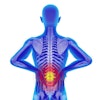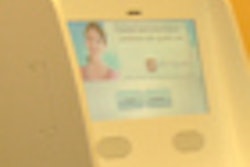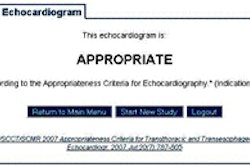Improving healthcare quality by reducing errors is an easy goal to endorse. Motivating healthcare providers to report errors, mistakes, and near misses is harder to achieve. But the biggest obstacle -- assembling data into a format for efficient, accurate analysis -- is being made much easier through electronic forms.
An Internet-accessible radiology incident reporting registry, enabling medical professionals to anonymously submit "events" ranging from a minor PACS malfunction to a medical incident, is pioneering the use of an electronic national medical imaging incident reporting system in Australia and New Zealand.
The achievements, shortcomings, and challenges are forthrightly described in two articles published in the August issue of the Journal of the American College of Radiology (2010, Vol. 7:8, pp. 582-602).
The Radiology Events Register (RaER) was launched as a pilot project in June 2006 by the Royal Australian and New Zealand College of Radiologists' Quality Use of Diagnostic Imaging Program in Sydney and the Australia Government Department of Health and Ageing in Canberra. Its objective was to demonstrate the feasibility of a data collection system that would enter incident reports via a Web interface, and to fill a gap that existed in Australia to collect data about incidents that involved diagnostic imaging.
This project was a spin-off from a strong and successful program to report anesthesia incidents. That program's success represented a cultural sea change in which anesthesiologists, who reported very few medical incidents with patients, worked with their professional association and government agencies to create an effective system that has positively affected patient safety, according to the authors.
Since its inception, use has been steadily increasing. The project continues to be funded, and it reached its 1,000th entry milestone this year.
With the exception of serious adverse incidents, however, radiology professionals have been slow to report mistakes, errors, failures, and near misses. Specific issues that lead author D. Neil Jones, MD, head of emergency imaging at Flinders Medical Centre in Bedford Park, South Australia, and colleagues identified include time pressures, staffing shortages, and a large number of staff inside and outside radiology involved with patients' diagnostic imaging exams.
Wider healthcare processes can combine with radiology-related activities to create incidents, such as in infection control and blood and medication administration. Finally, there is the challenge of a long-established culture among radiologists that has not been prone to report problems, the authors wrote.
Incident reporting importance
Yet the importance of an incident reporting system, even for what may seem to be uneventful issues, cannot be underestimated. Once issues are identified, information can be rapidly disseminated to "clinical front lines," where actions can take place to prevent continued propagation. Successful incident reporting systems work in tandem with quality improvement efforts by nurturing widespread reporting of issues, communicating data effectively to produce positive change, and providing positive feedback to users that their voices are heard, according to the authors.
Jones and colleagues emphasize that incident reporting systems protect those who use them by offering either anonymity or confidentiality. Incidents may be caused by people, equipment, and/or software system failure, and it is initially more important to learn details about what the errors are and how often they occur than hold individuals accountable for them. The authors strongly recommend that if legal protection of reported incident data cannot be guaranteed, all data should be cleansed so that a specific incident cannot be "reidentified" to individuals and specific facilities.
An incident reporting system also needs to allow all types of users to contribute information. It should be designed to accommodate duplicate entries from different sources, including entries from patients, third-party investigators, and attorneys.
The RaER also encourages reporting of problems with both RIS and PACS if they affect a patient in any way. The system takes complaints about PACS that may be buried within vendor-specific chat rooms or user group meeting sessions and publicizes them in a way that enables all users of the technology to be cognizant of potential deficiencies.
RaER functionality
Users have the option of registering confidentially at www.RaER.org or submitting entries anonymously. As of November 2009, the database contained 543 incidents reported by individual practicing radiologists, 46 incidents reported by multidisciplinary hospital teams evaluating general clinical incidents, and 211 medicolegal incidents. These occurred throughout the four phases of an imaging cycle: preprocedural, procedural, postprocedural, and clinical action activities.
To maintain consistency, incidents are classified by a sole medical imaging technologist using an advanced incident management system tool. The most commonly involved medical imaging modalities for the first 800 incidents were CT (30%), plain radiographs (29%), and ultrasound (19%). Seventy-three percent of the most common incident types were attributed to clinical management, followed by inappropriate or inadequate documentation (8%). The most frequent origin of incidents outside the radiology department occurred in the emergency department.
Now that more than 1,000 incidents have been reported, detailed cause-and-effect analysis is being conducted. One of the limitations of the database is that the vast majority of entries by radiologists originate from public hospitals. However, most radiologists in Australia work predominantly in the private sector and in nonpublic hospital or ambulatory settings. Information about incidents occurring outside public hospitals has originated from medicolegal incidents.
A greater balance is needed, according to the authors. Beginning in 2010, use of RaER has been incorporated into the training curriculum of radiology residents, and credits for continuing medical education are given when a radiologist is willing to identify himself or herself when submitting an incident report.
The authors hope that this effort -- combined with recognition that contributing to the database will improve patient safety overall -- will enable it to grow and flourish.
By Cynthia E. Keen
AuntMinnie.com staff writer
August 20, 2010
Related Reading
Incident learning lowers radiation therapy errors, July 5, 2010
Healthcare IT tackles contrast events in RSNA sessions, December 11, 2009
Online radiology incident reporting system identifies error sources, November 5, 2009
QA tool cuts errors in radiation oncology department, August 6, 2008
AHRQ sets 2008 target for error reporting system, August 24, 2007
Copyright © 2010 AuntMinnie.com



















